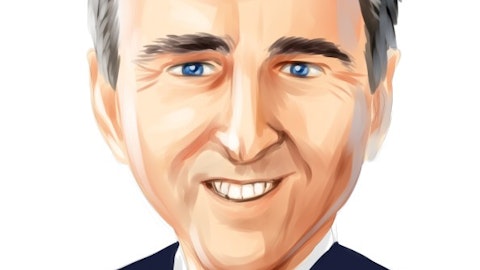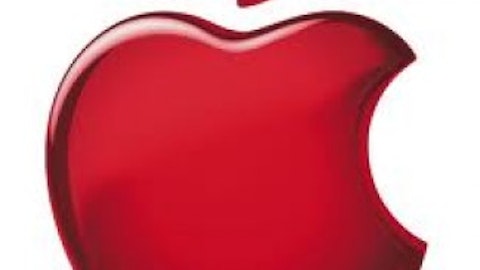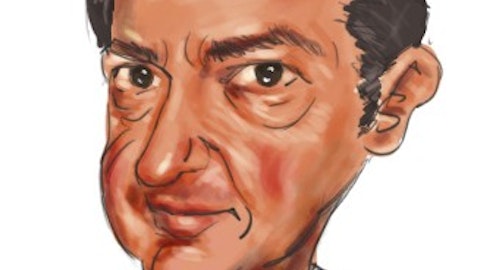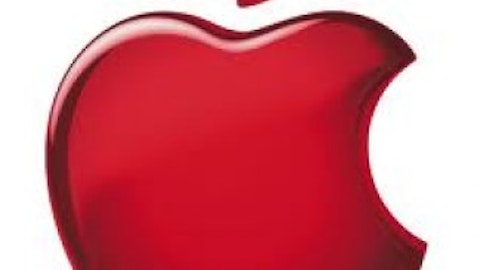For blue-chip stocks, it’s been another solid year. Fully 25 out of the 30 stocks in the Dow Jones Industrial Average are up this year, led by a 61% spike in Bank of America Corp (NYSE:BAC), a 44% gain for The Home Depot, Inc. (NYSE:HD) and a 39% jump for The Walt Disney Company (NYSE:DIS).
Among the five 2012 laggards in the Dow, one stock has underperformed for quite some time. Even as the Dow has finally clawed back to levels seen five years ago, shares of The Boeing Company (NYSE:BA) remain nearly 40% below levels seen before the financial crisis hit.
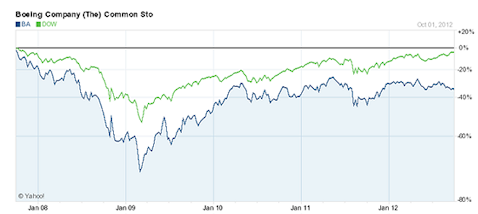
It’s quite easy to see why the world’s largest airplane maker has lagged. Financial performance has been weak as the company spent heavily on the development of new planes, incurring massive cost overruns and missed deadlines. As a result, a company that routinely generated at least $4 billion in annual free cash flow has struggled to meet that target in recent years.

Big hopes for the Dreamliner
More than five years ago, Boeing began developing a next-generation lightweight aircraft known as the Dreamliner, or 787. Although Boeing periodically updates its existing planes, such as the 747, with fuel-saving or range-extending modifications, the 787 began with a clean sheet of paper. The company sought to revisit every aspect of the design and production processes, and we now know with the benefit of hindsight that Boeing “bit off more than it could chew.” The delivery dates for the first 787s were continually pushed back, yielding a great deal of bad will with the key airline customers that had been hotly anticipating the snazzy new planes.
Even as deliveries of the 787 began, Boeing couldn’t seem to get it right. In fact, it took until last month, when plane No. 66 was produced, for Boeing to declare a perfectly-built plane that didn’t require rework. As a result, Boeing is now slowly ramping up production and, as output of the 787 rises further, frustrated customers will finally start to take deliveries.
Here’s the good news: Demand for new aircraft remains surprisingly resilient in the face of a still-slow global economy. Carriers are eager to retire cramped inefficient planes with the Dreamliner, as these planes have lower operating costs and provide a more desirable flying experience — a key consideration for carriers that like to push pricing to premium levels.
Finally working out the various production bugs has led Wall Street analysts to revise their view of Boeing’s coming output plans for this all-important plane. Merrill Lynch, for example, had been anticipating the production of 330 planes through the end of 2016. After taking a fresh look in mid-September, the company now pegs that figure at 495 — a 50% jump.

And this all pivots back to Boeing’s potential free cash flow generation — a key catalyst for this stock. Analysts say free cash flow could move back up above $3 billion this year, the best showing since 2009. Goldman Sachs sees that figure reaching $4.7 billion in 2013, and once Dreamliner production moves yet higher in 2014, Goldman projects free cash flow to hit $6.2 billion, not far from the company record hit back in 2007.
Notably, stronger free cash flow won’t simply be the result of a sharp pullback in capital spending (as many companies do to goose free cash flow). Instead, Boeing has extensive investment plans for its other plane programs, which should keep its entire fleet up to date as rival Airbus also sharpens its game. It’s a win-win for airline carriers, and they’ll have ample incentive to keep retiring older planes for newer, more fuel-efficient ones.
Boeing’s rising free cash flow may also finally trigger a series of more robust dividend hikes. From 2003 through 2008, Boeing boosted its dividend typically 15% to 20% every year. Yet after reaching $1.62 a share in 2008, it has barely risen (to just $1.76 a share) since then. If Boeing can meet those free cash flow targets, then the dividend may start rising again at a 20% clip, exceeding $2.50 a share by mid-decade. That would be good for a 3.6% yield.
Merrill Lynch took heed of management’s comments on that front: In a recent meeting with management, executives “did not offer any details but implied that they would do ‘something more shareholder friendly’ in 2013. This could potentially be an increased share buyback or an increased divided.”
Risks to Consider: Orders for new aircraft continues to remain surprisingly strong, though an even deeper economic slowdown would put this momentum at risk.
Action to Take –> The bungled Dreamliner launch led investors to see Boeing as a high-risk stock, as the company overspent and lacked the right controls. “Management no longer has interest in doing ‘moon shot’ aircraft development. Rather, they want to be more like Apple Inc. (NASDAQ:AAPL), doing 30% to 50% upgrades to existing planes,” note Merrill’s analysts. The slightly more conservative approach should lessen the perceived risk in the stock, enabling the multiple to expand a few points. And that should be just enough to shift Boeing from being a Dow laggard to a Dow leader.
This article was originally written by David Sterman, and posted on StreetAuthority.



